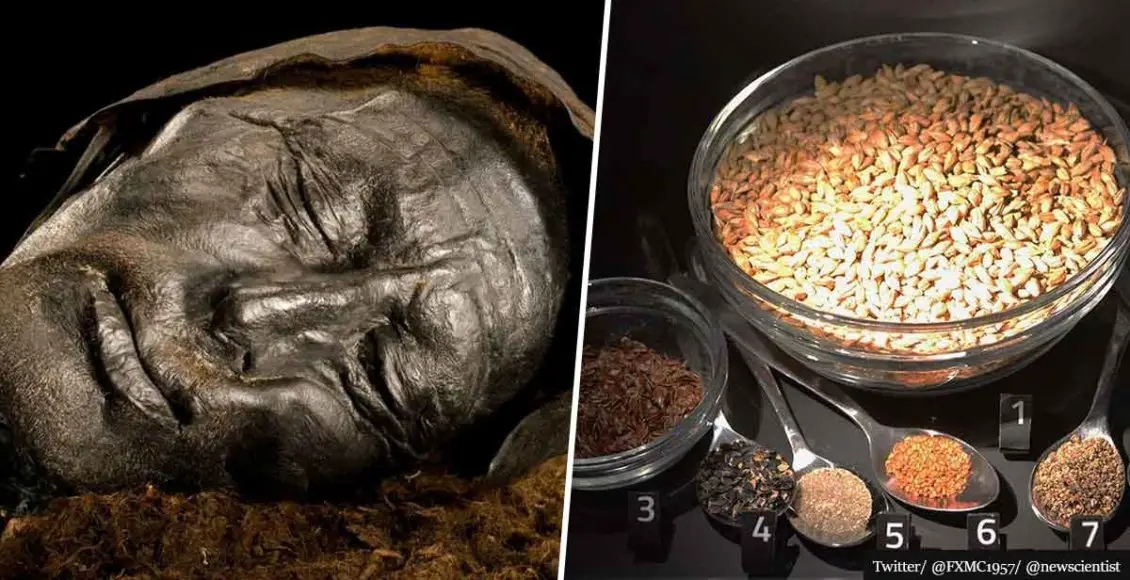The “Tollund Man” – Scientists identified the last meal of a mummy from the 4th century BC.
The “Tollund Man” refers to a man who lived in the Iron Age, whose mummified body was discovered in 1950. His well-preserved remains were found by accident in a Danish bog.
PHOTO OF THE DAY. The Tollund Man, a naturally mummified corpse of a man who lived during the 4th century BC. He was found in 1950, preserved in a peat bog on the Jutland peninsula in Denmark. pic.twitter.com/A0stkjWvY7
— Prof Frank McDonough (@FXMC1957) July 24, 2021
What’s fascinating about the Tollund Man’s discovery is that scientists were actually able to identify the contents of the mummy’s digestive system.
After detailed examination, the experts determined the man died by hanging in around 400 BCE in Denmark’s Jutland peninsula. As per Unila, it is believed that his death was a ritual sacrifice.
As for his last meal, the Tollund Man treated himself to barley, flax, gold-of-pleasure seeds, seeds of pale persicaria, and 16 other plant species.
The mummy’s digestive system analysis was conducted between 2019 and 2020 by a team of scientists led by archaeologist Nina Nielsen from the Silkeborg Museum in Denmark.
With today’s improved knowledge of “plant macrofossils and the methods for analyzing gut contents,” the team was motivated to detect unusual foods linked to ritual sacrifices. As per Gizmodo, Nielsen stated:
“We can now pretty much reconstruct the recipe of the last meal of Tollund Man. The meal was quite nutritious and consisted of a barley porridge with some seeds from pale persicaria and flax.”
Last meal of a man mummified in a bog reconstructed after 2400 years https://t.co/TcEcAtWjM1 pic.twitter.com/WDWWWDk8gP
— New Scientist (@newscientist) July 26, 2021
The research reveals that the man ate his last meal about 12 to 24 hours before dying.
However, the experts marked that the seeds from pale persicaria were an unusual component of the mummy’s final snack, as its seeds were typically removed during threshing.
Nielsen commented:
“As for now, we don’t know whether the use of threshing waste in the Iron Age cuisine was normal practice or whether this ingredient was only used at special occasions like human sacrifices.”


